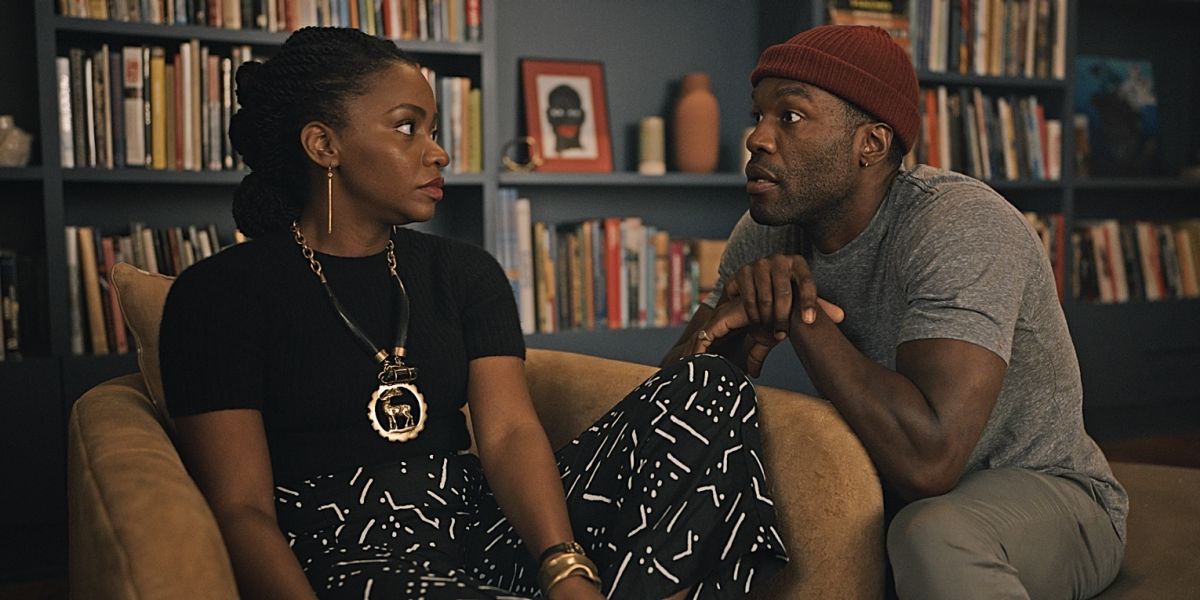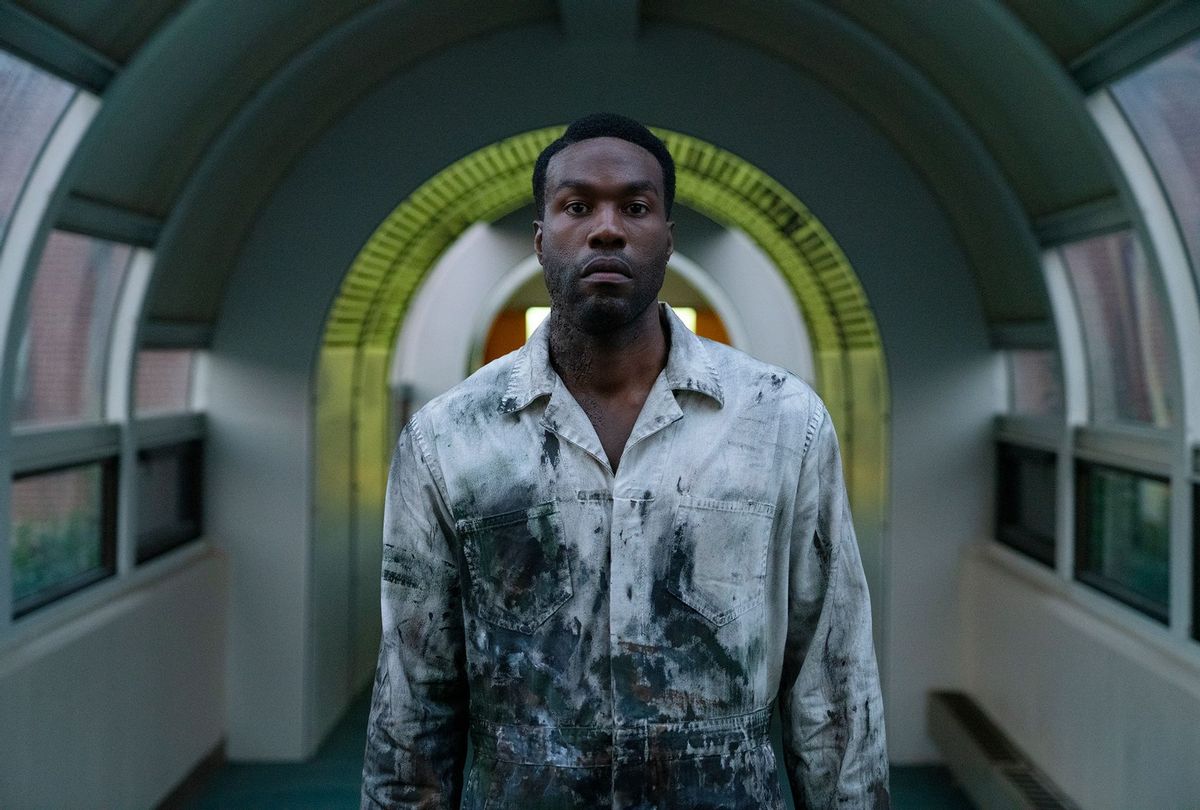Nia DaCosta’s Candyman is now in theaters, but is this loose horror-slasher-legacy-sequel really a dark treat for audiences?
August 28, 1955. A young Emmett Till is beaten, mutilated, and murdered in Drew, Mississippi at just 14 years old. The reason was that he was born Black. April 4, 1968. Dr. Martin Luther King Jr. is publicly assassinated in Memphis, Tennessee. He had dared ask for us all to be treated as what we are; human. May 25, 2020. George Floyd was pinned and murdered by a police officer in broad daylight. He was coming from the store.
Stories of Black trauma exist all throughout American history. Moments of hardship and horror, plagued with unjust death and inhumane treatment. These moments pile up and manifest into collective memories passed down from generation to generation. It’s no coincidence, and there’s no “getting over it,” the effects slavery has had years after it formally ended.
But Black history is not Black trauma. It is love, perseverance, and community. It is a vast variety of cultures and creativity. And Black history in America is a shared experience, a connection between cultures and communities, despite a history of being pulled away from them. As a concept, the new Candyman is a manifestation of years of Black trauma combined with a sense of close community. As a movie, Candyman isn’t quite there.
Directed by Nia DaCosta (Little Woods), who also co-wrote the film with producer Jordan Peele (Get Out, Us) Candyman is a supernatural horror film and a direct sequel to the 1992 film of the same name.
The original Candyman centered around the titular folk legend, a sinister spirit with a hook for a hand and an accompanying back-up band of honey bees. While the sequel also follows the legend of the character made famous by Tony Todd, it is told through a very different lens than the original.
1992’s Candyman followed Helen Lyle (Virginia Madsen), a white protagonist venturing into the poor urban area of Cabrini Green to research an urban legend. The original was very much told through an outsider’s perspective, with Helen’s “white lens” attributing to her understanding of Cabrini Green and what the Candyman himself stood for. Her position as an onlooker, even choosing to stay just outside of the actual housing project rather than in, parallels the state of real-life urban area monitoring. Namely that there doesn’t seem to be any real monitoring at all, as living conditions worsen and communities (often Black) suffer.

Advertisement
Set in the modern day 29 years later, the new Candyman discusses the aftermath of these urban areas falling to decay. Cabrini Green, like so many other poor areas in Chicago, has fallen victim to the usual practice of neighborhood gentrification. A practice that, again, is often reserved for poorer, Blacker communities that the city had long since given up on and decided to “remodel.” We hear about the effects of gentrification quite a bit in DaCosta’s Candyman and even see it in the newly refurbished, artist-friendly district Cabrini Green has become, and in characters like William Burke (Colman Domingo)—a direct victim of the effects of gentrification and Black neighborhood eradication.
As such, the story of DaCosta’s Candyman is told through the lens of Black Americans themselves. Rather than observation, the new Candyman is meant to serve as a reflection of the hardships Black communities in America have suffered, forced from one home after another. Unfortunately, in a story meant to display both the harsh treatment of Black communities and showcase the nature of them, Candyman lacks when it comes its sense of…well, community.
Our protagonists this time around are Anthony McCoy (Yahya Abdul-Mateen II) and Brianna Cartwright (Teyonah Parris). Two African-American creatives who serve as the focal point for the film’s message of the harmful effects of gentrification, with their removal from their respective communities and their adoption of a newer world resulting in a horrific, downward spiral.
Anthony’s search for success as an artist causes him to turn his back on his family, friends, and the very nature of his creativity, replacing it with macabre paintings inspired by the folklore of the Candyman and aiding in his departure into madness. Brianna eventually finds success as an art director, but quickly realizes that her peers have only taken interest in her for the tantalizing events surrounding her relationship with Anthony. These two stories intertwine and recite a message that is all too real and familiar; oftentimes, Black thought is more appealing than Black life.
Advertisement
In this case, the story of Black trauma surrounding Candyman, and how it relates to the story of gentrified communities like Cabrini Green, is what draws the rich white folk to Anthony and Brianna’s painted door. They don’t have any interest in them as people, or even in any positive aspects of their lives. The humanity of Anthony is ignored to the point that most characters quite literally overlook how troubled he becomes both physically and mentally throughout the film.
Ironically, in its attempt to display this ignorance, the new Candyman doesn’t leave a lot of room for anything else in its narrative. In a story about the gentrification of Black communities, there aren’t many moments of said community present in the film. It’s almost as if we are getting a complete reversal of perspective from the first film. Whereas in that one, the targets of Candyman’s fearful vengeance were the residents of Cabrini Green, many of the victims in the sequel are, as William Burke points out, the legacies of the perpetrators of Black oppression throughout history. Solidifying the Candyman as a spirit of vengeance and a manifestation of the hardships of Black America is the point.
This display of comeuppance relates to the real-life rise in protests against unjust crimes on Black people across the world. The “Say Their Names” movement, sparked by the murders of innocent Black lives going all the way back to the 1930s, is a direct reference to Candyman’s iconic “Say My Name” slogan. It is no longer possible to ignore the history of Black trauma nor the lasting effects it has had on the Black community.
Advertisement
But as I mentioned before, Black history is so much more than trauma. For all its discussion on gentrification, there simply isn’t enough display of what these urban policies are taking away. The film starts strong with a glimpse of Cabrini Green’s once tight-knit Black community in the 1970s before skipping ahead to the current, gentrified state of the housing district. Unfortunately, this is the only time we get a real look at Black community before the film spends the rest of its time showing the destructive aftermath.
The message of Candyman, although important and necessarily hammered in, ironically adds to the issues many have with the display of Black trauma in media; namely that there’s just too much of it. The Black experience is more than just hardship. Black culture existed long before it was threatened. The communities fought for by people like Dr. Martin Luther King Jr., which housed innocent lives like George Floyd and Breanna Taylor, are full of love and joy, despite hard times around the corner.
As a horror film, Candyman is a visual spectacle. There’s plenty of body horror and suspenseful scenes mixed in with the social commentary, just like any film Peele attaches himself to these days. DaCosta proves her directing prowess with plenty of terrifying and provoking shots. Several shots with Abul-Mateen II in particular evoke such a wonderfully unsettling feeling. So if you’re looking for a fairly spooky horror film, Candyman certainly lives up to the legend in that regard. It just barely misses the mark when it comes to its themes.
It is important that we acknowledge what happens to our communities and to our people, and the treatment of Black lives throughout history. Candyman does this very well. But it is equally as important that we remind ourselves that we are more than just products of racism and discrimination. There is more to Black existence than pain, and it was a little disappointing that Candyman didn’t reflect that.
Candyman is now playing in theaters. Watch the official trailer here.
Advertisement

